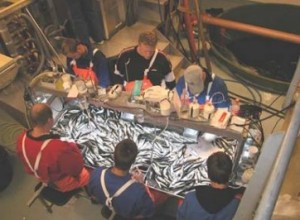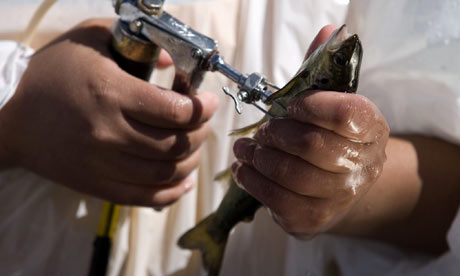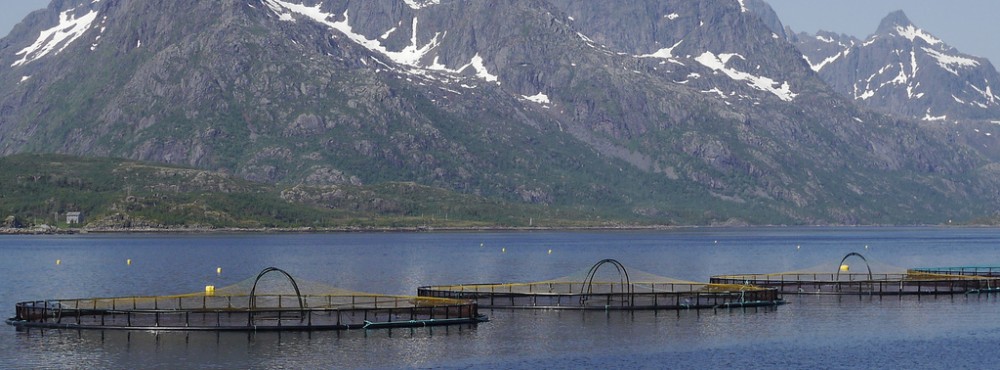Vaccination methods, welfare concerns, and economic concerns are discussed in the following pages. Although vaccines have allowed farms to be economically sustainable and improve salmon survivability on farms, there are serious welfare concerns associated with vaccination as we will see.
INJECTION VACCINATION
Injection Procedure
Smolts are transported in pipes from rearing tanks into an anaesthetic bath where they will be injected intraperitoneally (Press and Lillehaug, 1995). The handling stress in these pipes is harmful to smolt welfare.

Smolts are transferred into anaesthesia chambers via pipes. Smolts experience significant handling stress in these pipes.
Smolts are crudely handled by labourers and are exposed to air, impairing ventilation. This will trigger a stress response, leading to a cascade of physiological changes that compromise smolt immunity (Ashley, 2007).

Picture of anasthesia bath. Note how overcrowded the baths are and that smolts will be handled by hand, leading to significant overcrowding and handling stress, respectively.
Smolts are vaccinated by hand. Even though anaesthetized and incapable of feeling pain temporarily, the smolt gasps for air in the picture below. Taking a smolt out of its natural medium (water) will elicit the stress response (Conte, 2004)

A farm labourer vaccinating the smolt by hand. Note that this salmon is exposed to air probably for the order of seconds to even a minute. This may elicit the stress response.
In some farms machine-vaccination is the alternative vaccination method.
Smolts will then be transferred into the farming chamber where they will grow until they reach production size.

